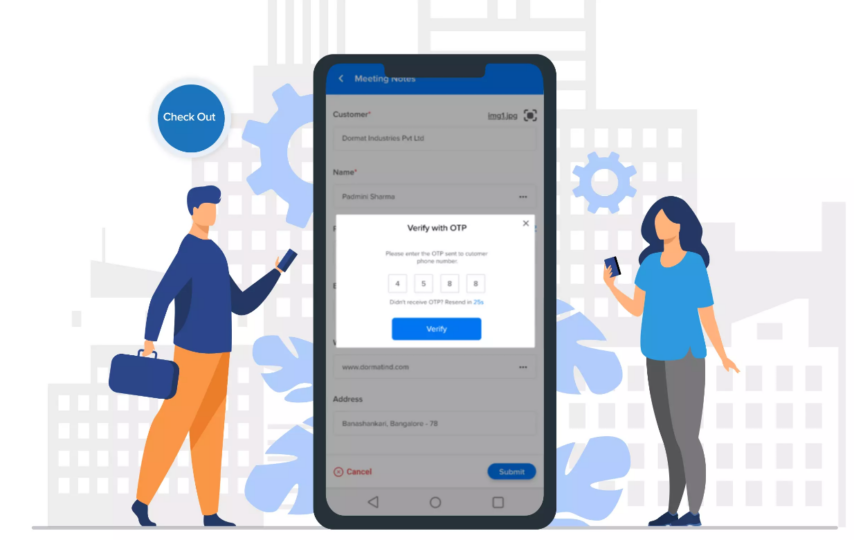In our ever-evolving digital landscape, safeguarding online transactions and preserving user data has become a top priority.
One formidable weapon in the battle against cyber threats is SMS OTP verification. SMS OTP, short for One-Time Password, bolsters security by necessitating the input of a unique code sent to a user’s registered mobile number with the help of an OTP SMS provider.
This authentication method finds widespread application, including two-factor authentication, phone number verification, account recovery, and payment validation. In India, SMS OTP has gained substantial traction, serving as a dependable guardian for digital interactions. This comprehensive guide delves into the Indian landscape of SMS OTP verification, its advantages, best practices for implementation, and the pivotal role played by OTP service providers in ensuring secure transactions.
The Significance of OTP SMS Verification in India
India’s rapid digital transformation, spurred by initiatives like Digital India and the proliferation of mobile devices, has ushered in a surge in online activities.
With this increased digital footprint, the risk of cyber threats like hacking, phishing, and unauthorized access has grown substantially. OTP SMS verification in India has emerged as a pivotal security measure to shield both individuals and businesses from these looming dangers. With various OTP SMS providers in India, implementing OTP SMS verification, organizations can ensure that only individuals with legitimate access to their registered mobile numbers can execute transactions, access accounts, or perform crucial actions. This proactive approach serves as a robust deterrent against unauthorized access, data breaches, and financial liabilities.
Best Practices for OTP SMS Verification
To ensure a robust and secure OTP verification process, organizations should adhere to these recommended guidelines:
- Transparent Communication: Effectively convey to users the purpose and significance of OTP SMS verification. Offer concise instructions on obtaining and inputting OTP codes correctly.
- Optimal Code Length: Select an appropriate code length for OTPs. While four to six digits are customary, longer codes can bolster security further.
- OTP Validity Duration: Establish a reasonable time window for OTP code validity. Typically, OTPs remain valid for a brief period, striking a balance between timeliness and minimizing misuse risks.
- Secure Delivery Channels: Leverage secure delivery channels like SMS for transmitting OTP codes. SMS ensures direct communication with the user’s registered mobile number, reducing interception and tampering risks.
- Two-Factor Authentication: Consider implementing two-factor authentication (2FA) by combining OTP SMS verification with an additional authentication factor, such as a password or biometric data. This layered approach enhances security.
- User Education: Educate users on the importance of OTP SMS verification and how to discern and thwart phishing attempts. Offer explicit guidance on identifying legitimate OTP messages and reporting suspicious activity.
- Seamless Integration: Effortlessly integrate OTP SMS verification into the user interface. Guarantee that the OTP input field is prominently visible and user-friendly, minimizing errors and enhancing the overall user experience.
- Routine Security Audits: Conduct periodic security audits to pinpoint and rectify vulnerabilities within the OTP verification process. This proactive measure upholds the integrity and effectiveness of the authentication system.
Selecting an OTP Service Provider in India
When it comes to implementing OTP verification, the choice of a dependable OTP service provider holds significant importance. OTP service providers play a pivotal role in delivering OTP codes securely and efficiently. They ensure that OTP messages reach users’ registered mobile numbers in a timely manner. When making the selection of an OTP service provider in India, the following factors warrant consideration:
- Reliability: Opt for an OTP service provider with a well-established reputation for consistently delivering OTP messages with precision. Seek providers with a track record of high uptime and reliable connectivity.
- Delivery Rate: Verify that the OTP service provider boasts a commendable delivery rate, reducing the likelihood of delays or failed OTP message deliveries to users’ mobile devices.
- Scalability: Choose an OTP service provider equipped to handle the expanding user base and increasing SMS traffic of your organization. Scalability is key to ensuring uninterrupted services.
- Security Measures: Assess the security measures enforced by the OTP service provider to safeguard OTP codes and user data. Prioritize providers that uphold data encryption standards and have robust security protocols in place.
- API Integration: Confirm whether the OTP service provider offers a user-friendly API for seamless integration with your existing systems and applications. API integration streamlines OTP generation and delivery processes.
- Cost-Efficiency: Take into account the pricing structure and overall cost-effectiveness of the OTP service provider. Compare pricing plans and ensure that the chosen provider offers competitive rates while upholding service quality standards.
By making an informed choice and selecting a reliable OTP service provider, businesses can ensure the successful implementation of OTP verification. This, in turn, facilitates a secure authentication process for their user base.
Message Central’s “Verify Now” stands as a top-tier OTP SMS provider in India. The platform excels in OTP verification, delivering OTP SMS in under 5 seconds. With direct operator connectivity and access to the best SMS routes in India, Message Central offers unbeatable flat SMS rates.







